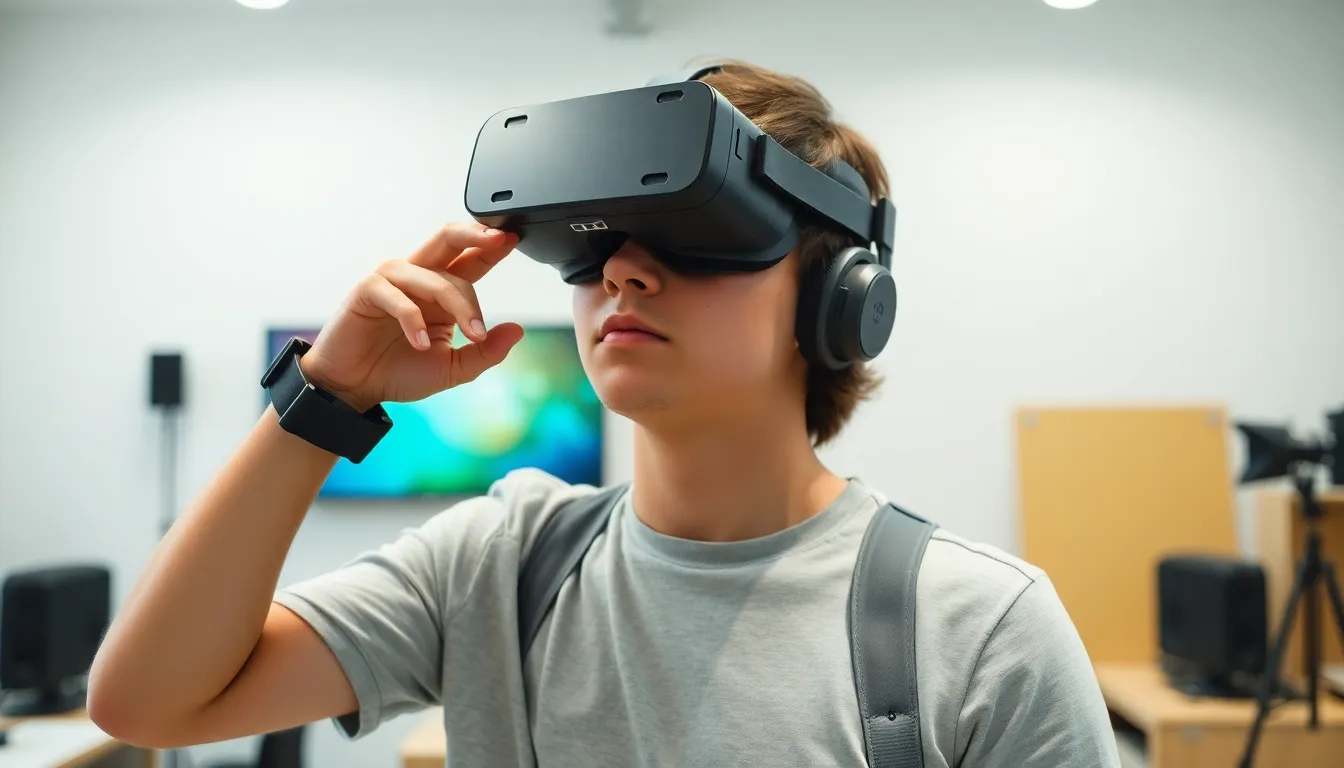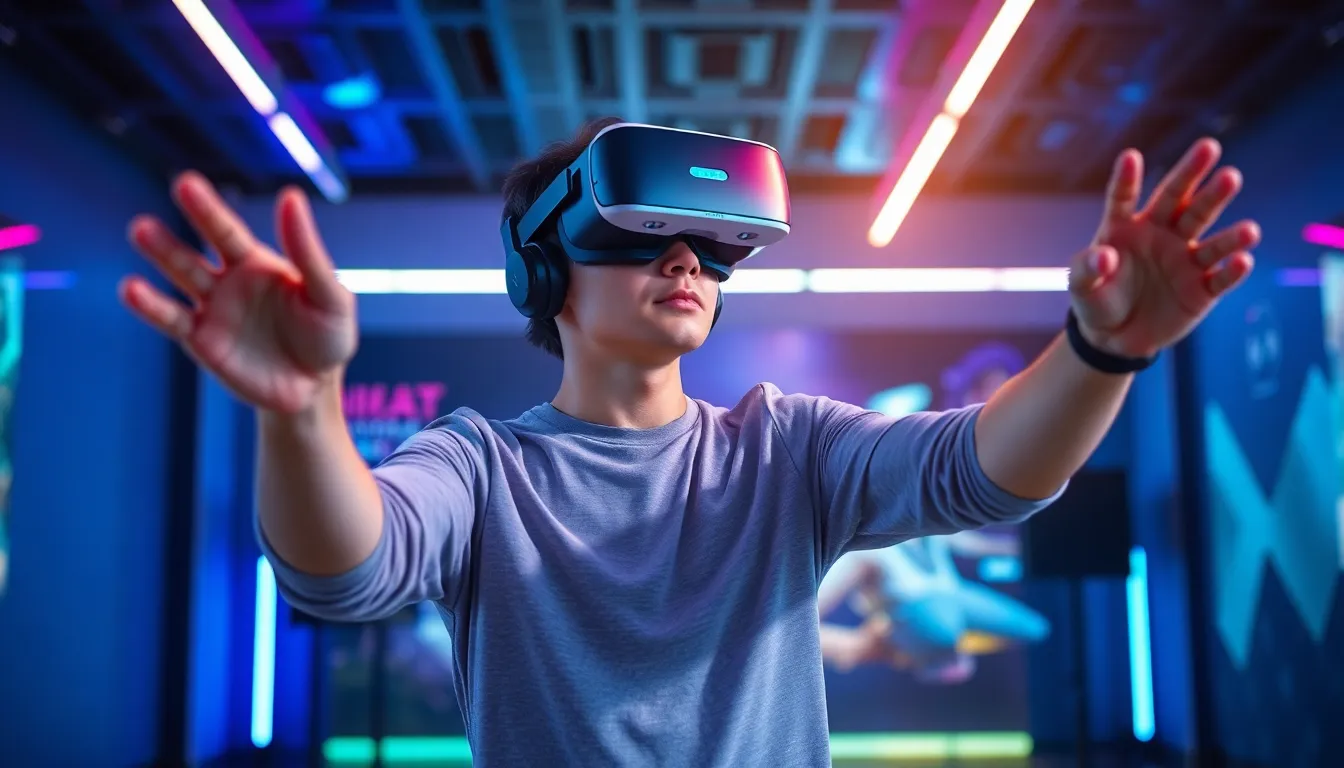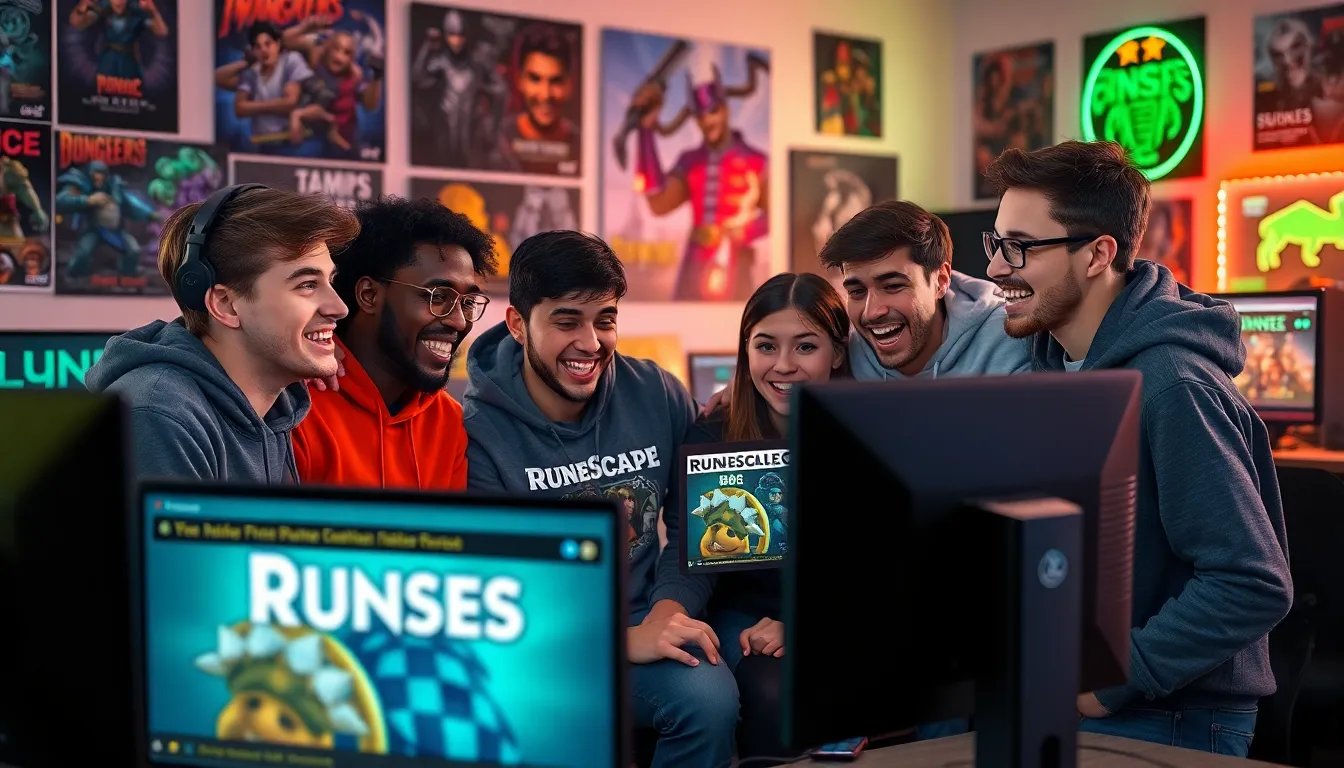Virtual reality has revolutionized how we experience digital worlds, but what happens when the feedback doesn’t quite match the action? Enter VR feedback calibration, the unsung hero of immersive experiences. It’s like the secret sauce that ensures every sword swing or virtual high-five feels just right. Without proper calibration, users might feel like they’re trying to dance with two left feet—awkward and out of sync.
Table of Contents
ToggleUnderstanding VR Feedback Calibration
VR feedback calibration plays a crucial role in delivering immersive virtual experiences. Accurate calibration transforms interactions, allowing users to feel as though they genuinely engage with the virtual environment.
What Is VR Feedback Calibration?
VR feedback calibration refers to precise adjustments of sensory inputs in a virtual environment. This technique aligns user movements with virtual responses, ensuring seamless interaction. By fine-tuning parameters such as motion tracking and haptic feedback, developers enhance realism. Calibration addresses individual variances, accommodating different users. For example, adjusting for hardware differences makes experiences more consistent and enjoyable.
Importance of Accurate Calibration
Accurate calibration significantly impacts users’ overall experience. Properly calibrated feedback allows for natural movements, making sword swings or virtual grabs feel intuitive. User immersion increases with accurate sensory input synchronization. Many users report discomfort or disorientation when calibrations fall short. Research indicates that effective calibration improves users’ ability to navigate virtual spaces effortlessly. Prioritizing calibration leads to higher satisfaction and more meaningful interactions in VR environments.
Techniques for VR Feedback Calibration

Calibrating VR feedback involves various techniques that improve user experience. Effective calibration is crucial for seamless interactions in virtual environments.
Sensor Calibration Methods
Sensor calibration techniques focus on aligning the input devices with user movements. Accurately placing sensors on body parts helps in capturing precise motion data. Using calibration tools, users can adjust sensitivity settings to optimize responsiveness. Position tracking enhances spatial awareness, ensuring movements in reality translate effectively into virtual actions. Regular calibration processes help to maintain accuracy over time, accommodating any shifts in hardware placement. Testing different setups allows users to identify the most comfortable configurations, fostering a natural feel during interactions.
Software Calibration Approaches
Software calibration approaches adjust virtual settings to meet individual user needs. Customizing parameters, such as movement speed and scaling factors, improves the synchronization between user actions and on-screen responses. Utilizing built-in calibration tools within the VR software can streamline these adjustments. Users can execute guided calibration routines that prompt specific movements, aiding in fine-tuning settings. Analyzing feedback data helps developers refine software calibration processes further. Harnessing machine learning can automate adaptive calibration, enhancing user comfort and immersion in dynamic VR scenarios.
Challenges in VR Feedback Calibration
VR feedback calibration presents several challenges that can significantly impact user experience. Addressing these challenges is critical for enhancing immersion and interaction within virtual environments.
Common Calibration Issues
Calibration often faces inconsistencies due to device variability. Users might experience differences in tracking accuracy, affected by environmental factors such as lighting and room layout. Device latency creates further issues, causing delayed responses that hinder fluid movement. Misalignment of sensors decreases the effectiveness of user input, resulting in actions that feel disconnected from virtual feedback. Lastly, individual differences in user physiology or behavior can lead to varied calibration needs, complicating the calibration process across different users.
Solutions to Calibration Challenges
Effective calibration solutions involve implementing adaptive techniques tailored to user experiences. Utilizing real-time feedback systems can identify discrepancies and adjust settings on-the-fly. Regular calibration sessions help maintain accuracy, ensuring devices reflect any changes in user interaction over time. Customizable settings empower users to adjust sensitivity or other parameters, aligning the virtual experience with personal preferences. Leveraging machine learning algorithms offers automated adjustments, learning from individual usage patterns to enhance calibration seamlessly. These solutions collectively enhance user comfort and improve overall interaction within VR environments.
Future Trends in VR Feedback Calibration
Ongoing advancements in technology will significantly drive VR feedback calibration improvements. Emerging sensors provide higher accuracy in tracking user movements, enhancing the realism of interactions. Manufacturers are developing more sophisticated feedback systems, which blend haptic feedback with visual cues for a seamless experience. Machine learning algorithms adapt calibration parameters based on user preferences over time, leading to personalized interactions. Virtual environments will benefit from these technological innovations, ensuring calibration processes become increasingly efficient.
Advancements in Technology
Innovative hardware plays a pivotal role in shaping future VR feedback calibration. New generation headsets feature improved motion sensors, which track head and hand movements more precisely. Developers are focusing on integrating artificial intelligence to optimize calibration processes in real time. Enhanced tactile feedback technology allows users to feel virtual objects more realistically, bridging the gap between physical and virtual worlds. As these technological advancements evolve, experiences in VR will become more immersive and enjoyable.
Potential Applications
Various industries stand to benefit from improved VR feedback calibration techniques. In education, calibrated VR simulations provide students with more engaging learning environments. Healthcare utilizes calibrated VR systems for training medical professionals in realistic scenarios without risking patient safety. The gaming industry experiences significant gains, offering players more responsive and interactive gameplay. Real estate professionals leverage calibrated VR for virtual property tours, making the buying experience more informative. Ultimately, the diverse applications underscore the transformative potential of refined VR feedback calibration.
Effective VR feedback calibration is crucial for creating immersive and engaging virtual experiences. By ensuring that user movements align seamlessly with virtual interactions, it enhances realism and comfort. As technology advances, the potential for more precise calibration techniques continues to grow, paving the way for personalized and intuitive experiences.
The integration of machine learning and innovative hardware will further refine calibration processes, making VR environments more adaptive to individual users. This evolution not only promises enhanced satisfaction but also broadens the applications of VR across various industries. As users continue to explore the possibilities of virtual reality, the importance of accurate feedback calibration will remain at the forefront of optimizing their experiences.








